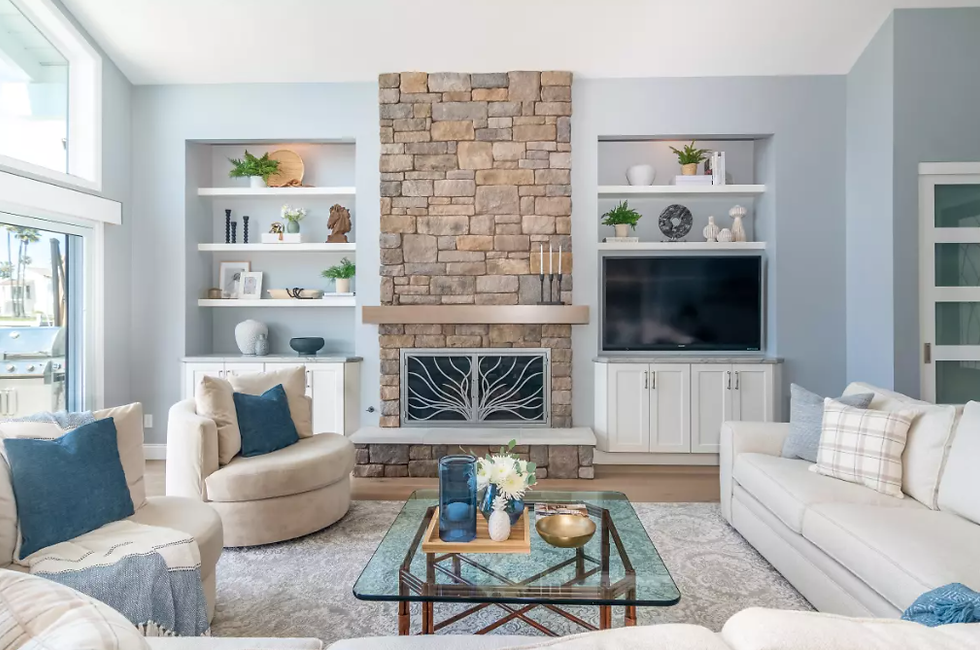
Fireplaces can create a cozy atmosphere, and newer gas and electric options can modernize your house’s old flame
BY CARON GOLDEN AUG. 19, 2023 6 AM PT
If you ask Jen Pinto to describe the ugliest fireplace she’s encountered in her years as an interior designer, there’s no hesitation.
“It was in a home by the water with a 1970s design,” she recalled. “It had dated stone columns on either side with a mirror above the firebox opening, while the rest of the fireplace was painted white brick. It was really ugly.”
Pinto, a senior interior designer with Jackson Design and Remodeling, was able to transform the wood-burning fireplace by pushing out the exterior wall to create a pair of alcoves with inset shelves and white cabinets on either side. She replaced the brick and the mirror with more contemporary stacked natural stone for a cozy, rustic feel; added a white oak mantel; and outfitted the firebox opening with a screen pattern resembling sea kelp to complement its coastal setting.
Unless you’ve recently moved into a new construction home, chances are good that if your home is more than 15 or 20 years old and has a fireplace, it’s likely to be wood-burning (even if it has a gas insert). And its facade may appear too dated for today’s sleeker styles. Think heavy red brick or bulky, rustic rock that makes you think it’s ready for climbing instead of lighting.
“We still see a lot of brick in houses we’re asked to redesign,” Pinto said. “A lot of people want to get rid of the brick for a more updated look.”
But another complaint she hears is whether the old fireplace is functioning correctly: Is it letting too much smoke in the house, or is it even radiating enough heat into the room?
“It’s more than just an ambiance thing,” she added. “A lot of people want to feel cozy next to a fire, and it’s just not hot enough. You’d think wood-burning fireplaces would generate a lot of heat, but the way that a chimney works, heat rises, and with a wood-burning fireplace the chimney pulls it up and out so it’s not as hot as you think it’s going to be.”
As romantic as a wood-burning fireplace may seem, it’s not only inefficient if you’re trying to heat a room: It’s also an environmental and health hazard. In 2021, the U.S. Environmental Protection Agency issued an update to its 2017 National Emissions Inventory. It noted that wood-burning devices, including fireplaces, are significant sources of air pollution in the U.S., emitting large amounts of fine particulate matter, called PM2.5, volatile organic compounds, and hazardous air pollutants that the EPA noted are known to contribute to “poor human health, air quality, and visibility.” The EPA explained that in addition to PM2.5, wood smoke contains several toxic air pollutants, including benzene, formaldehyde, acrolein and polycyclic aromatic hydrocarbons.
In other words, it may smell cozy, but it’s not good for your health.

Yorumlar